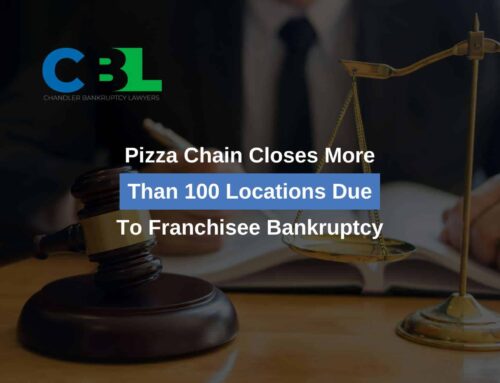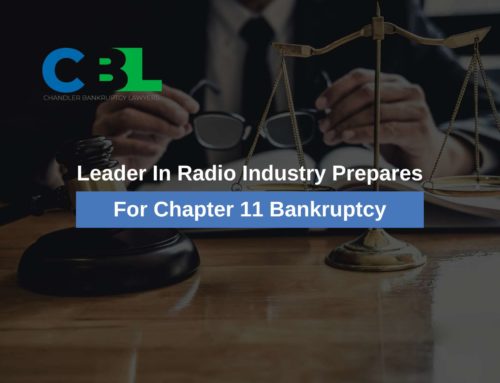The economy has been volatile for the past few years, and many large corporations have been forced to declare bankruptcy. One of the latest companies to file bankruptcy is Diamond Sports Group. Diamond Sports Group holds the broadcasting rights to the Phoenix Suns, Coyotes, and Diamondbacks. Phoenix sports fans probably don’t need to worry about their ability to watch their favorite team play on TV. Read on to learn more about the Diamond Sports Group bankruptcy and how it will affect Arizona sports teams, the different types of bankruptcy, and more.
Diamond Sports Group’s Bankruptcy
With the economy never fully recovering from the COVID-19 pandemic, several industries have been experiencing reduced profits for a considerable time. Even though baseball is considered America’s pastime, sports broadcasters weren’t immune from the pandemic’s effects. Diamond Sports Group declared Chapter 11 bankruptcy in March of 2023. This wasn’t because the company’s bank accounts ran into the negative- the company actually declared having $425 million cash on hand in the filing. This balance will be used to pay for all of the company’s operations fees except for those owed to the Arizona Diamondbacks. The Diamondbacks contracts are one of the company’s most profitable. Filing Chapter 11 bankruptcy may be a tactic for Diamond Sports Group to negotiate a more favorable contract with the Arizona Diamondbacks. However, the MLB also realizes the financial value of the Diamondbacks and is prepared to call Diamond Sports Group’s bankruptcy bluff. The MLB has released a statement indicating that it is fully prepared to broadcast Diamondbacks games in the event that Diamond Sports Group is unable to do so. Diamond Sports Group has already let a 30-day grace period to pay arrearages to the Diamondbacks expire, so this could be happening sooner rather than later. However, the MLB will need to get permission from the court before proceeding. This could happen any day now as the Diamondbacks season is scheduled to begin on April 6, 2023.
Three Types Of Bankruptcy
Diamond Sports Group filed Chapter 11 bankruptcy, which isn’t unheard of but is extremely uncommon for the average debtor seeking to discharge debts. Here, we will discuss Chapter 11 along with the two more common forms of consumer bankruptcy, chapter 7 and Chapter 13.
Chapter 11 Bankruptcy
Chapter 11 is available to both businesses and individuals, but is rarely used by individuals because of its cost and complexity. It is often utilized by businesses because it allows the chance to restructure the business and try to carry on into profitability. Special provisions are also available for small businesses to reduce costs and speed up the process. When a debtor (business or individual) files for Chapter 11 bankruptcy, not only are their creditors notified, but they form a committee that will have a decisive role in how the bankruptcy resolves itself. Creditors have relatively little involvement in Chapter 7 and Chapter 13 bankruptcy.
Chapter 7 Bankruptcy
Chapter 7 bankruptcy is the most commonly filed of the three. It generally is the shortest and simplest to file and clear debts without repayment by the debtor. The incredible benefits that Chapter 7 has to offer are only available to those who meet certain requirements, which vary by state. There are also exemptions, which also vary by state, that represent how much equity a bankruptcy debtor can protect in certain types of assets. Someone might also be disqualified from Chapter 7 bankruptcy by a prior bankruptcy filing. When a business declares Chapter 7 bankruptcy, the only option they have is to shut down operations. However, a small business owner that requires few assets to run may be able to start a new business under a different (even very similar) name.
Chapter 13 Bankruptcy
When Chapter 7 bankruptcy isn’t an option, whether because of income, too recent of a prior filing, or whatever the cause, chapter 13 bankruptcy is usually available as a backup. Some debtors prefer Chapter 13 anyway because of the unique benefits that it offers. Chapter 13 bankruptcy is sometimes called a wage earner’s bankruptcy because it pays off debts in a reorganized plan that lasts three or five years. This payment plan allows the debtor to pay off debts that can’t be discharged in Chapter 7 bankruptcy, all while safeguarded from their creditors by bankruptcy’s automatic stay. Chapter 13 provides other unique benefits, like being the only way to stop a back child support wage garnishment (only if the plan arranges for full repayment of arrears) and the chance to discharge secondary mortgages on a home. The downside is that almost all of the debtor’s disposable monthly income will be paid into that plan for years to come.
What Can a Creditor Do During a Bankruptcy?
When a large company like Diamond Sports Group files for bankruptcy, it is often to keep its creditors from suing them or pursuing some other types of debt collection. The automatic stay stops lawsuits and other negative repercussions from debt in most cases.
One way a creditor can try to bypass the automatic stay is by filing a motion for relief from the automatic stay. When the court grants this motion, the creditor is allowed to proceed as if there were no automatic stay in place. That creditor may want to repossess an asset, foreclose on a property, proceed with a lawsuit, enact or continue a wage garnishment, and more. The rest of the debtor’s creditors will not be able to proceed with collection unless they also file a successful motion for relief from the automatic stay.
Not every bankruptcy lasts the course and results in all of the debtor’s obligations being cleared. Bankruptcy cases can be dismissed for a litany of reasons. Some cases are dismissed under the condition that the debtor can refile, while others are dismissed more permanently. Regardless of the type of dismissal, it provides a lapse in protection from the automatic stay that allows creditors to proceed with collection. A debtor with the chance to re-file should do so as quickly as possible to reduce the chances of that happening.
Struggling With Debt? Let Our Legal Team Be Your #1 Draft Pick
Creating your bankruptcy petition, which will likely be well over 50 pages long, is just the beginning of a successful bankruptcy case. You will also need to make sure you have all the correct documentation attached to your petition, such as a course completion certificate for a court-approved credit counseling course. Your creditors may put up a fight against their debts being included in your case. Your trustee could pore over your petition with a fine-toothed comb and cause issues that could potentially be fatal to your case. With all these potential hurdles to discharging your debt, you need a skilled team in your corner. At Chandler Bankruptcy Lawyer, we are experienced in a variety of Chapter 7 and Chapter 13 bankruptcy issues. You don’t have to wait until you file to learn more about what these potential issues may be. Our firm is so confident in our services that we offer our initial consultations 100% free of charge. To get started, contact us through our online form or call us at 480-780-2211 to schedule your free phone consultation.

1731 West Baseline Road #101
Mesa, Arizona 85202
Phone:(480) 448-9800
Additional assistance is available from our Arizona Bankruptcy Experts:
Gilbert Bankruptcy Attorneys
Tucson Bankruptcy Lawyers
Glendale Bankruptcy Lawyer
Chandler Bankruptcy Lawyer
Tempe Bankruptcy Lawyers
Arizona Bankruptcy Attorneys
Peoria Bankruptcy Lawyers






